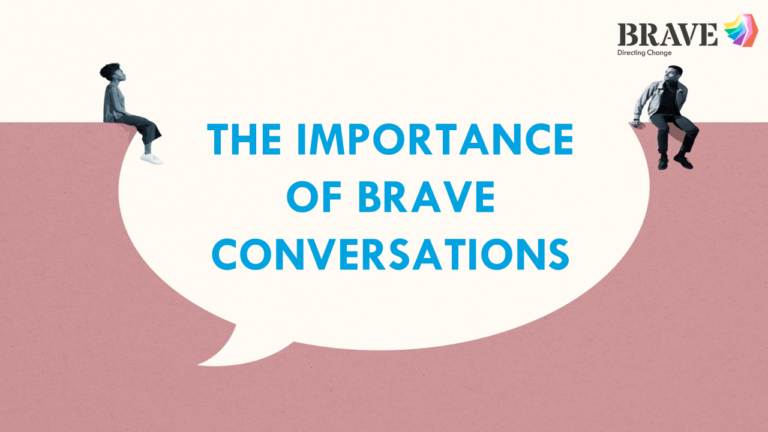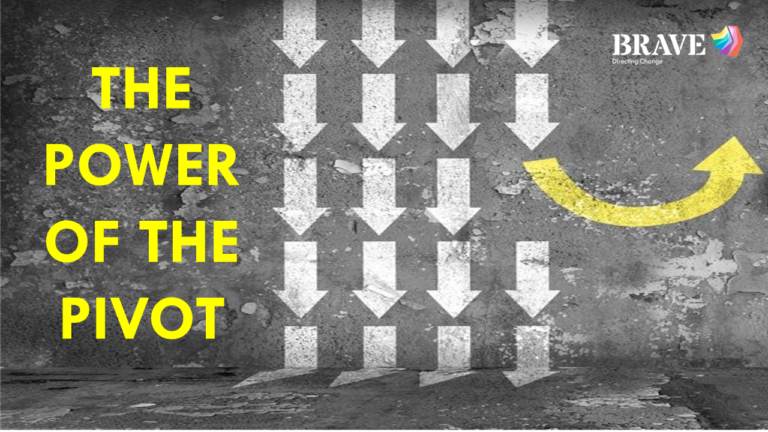“Be yourself and they’ll love you” is advice that many of us will have received over the years – be it ahead of a job interview, a date or first day of school. And it is fabulous advice, as long as you know what ‘being yourself’ is.
If you don’t it’s a bit like being told to ‘walk naturally’ or ‘stand naturally’ – your brain immediately goes into overdrive. “Is this how I normally move my legs? Do I normally swing my arms this much? When did my hands become such a big part of my body?”
But at the same time, when we’re in safe environments where we can be ourselves and relax into us ‘at our best’ life is so much easier, and we don’t really think about it at all.
So, what makes for a safe environment – often one in which we have clarity and parameters?
And how do we do this when we are an organisation rather than an individual? An organisation full of individuals who we want to both be themselves and represent us at the same time? Tricky right?
So we could give everyone a really long list of what to say when they answer the phone, how to dress, and murder their autonomy, creativity and drive with processes and procedures. But don’t forget the twice monthly quiz to fulfil our social needs!
I jest of course, although for many organisations this is the only way they have entertained a balance between consistency of their brand and a ‘good’ culture, the reason often being that they don’t know what they really are at their best as a whole. And there is no shame in this – many businesses grow and grow fast so what may have started as a really clear founder led definition or ‘sense’ of them is diluted overtime and / or doesn’t take into consideration the new perspectives or market changes. It happens all the time.
If we define what the organisations is, truly, at its best, embrace it, embed it throughout all we do and endeavour to live it we may just crack it.
So, let’s pause for a sec – and as L’Oréal cringely used to say – here comes the science bit!
Why does it matter that this definition of the organisations at its best is authentic – why can’t we just make it up based on what we know our customers want us to be?
Well in a 2017 study 90% of millennials said that authenticity was a key driver in their decision to support a brand. And don’t be fooled that it’s just these youngsters – GenX and Boomers followed closely behind with 85% and 80% respectively saying the same thing.
A 2019 study also showed that brand authenticity has a substantial effect on perceived value and brand trust.
But no, you can’t fake it – a third of respondents said that they had turned away from brands that they perceived to be inauthentic – to say one thing in their marketing and behave in a different way.
Think of it as a friend being two faced. You are loyal to them but once they are two faced, you start to question your relationship, the trust is gone and with it your investment in them and your friendship. #over
So, now we’ve established why it needs to be authentic for customer loyalty let’s consider why it’s also a huge engagement and performance driver internally – reducing waste and increasing buy-in from colleagues. It’s back to the point that we started with, it’s much easier to be yourself in a safe space, with clarity and parameters.
When a company or an individual can easily define what they are like ‘at their best’, it makes it way easier for the people around them to do the same. It helps others know how to act, feel and respond because they get ‘it’. They get the culture and brand they are dealing with.
A Glib Example:
Sammy’s Gin Company strives to make the best possible Gin. (Ok that’s great, so what?)
So that people really enjoy it and have a great time. (Ok so do we care about great Gin or them having a great time?)
Ok, so maybe actually we want to make great Gin because we take pride in quality but what really matters to us is that people have a great time. And actually, we know that people have a great time in many different ways so we don’t want to stipulate that they can only drink it in certain way – we want them to do whatever they want with it – we are not precious! (Brilliant, getting more of a feel of who you are and what’s important to you now, sounds like my kinda Gin!)
Therefore, externally we are going to talk about “Gin for a great time, whatever a great time looks like to you.”
That’s the marketing sorted but that’s just one segment of our brand, for it to be authentic it needs to be right through us. Our leadership needs to have a conversation about what ‘a great time, without compromising on quality’ means to them.
If we look at our suppliers – do they have a great time with us, or do we make their lives hell? Are our payment terms outrageous meaning they are always balancing and nudging us?
Do our colleagues produce quality work and have a great time doing it? If not, what’s stopping them? When we delve into it, we may find that they want more freedom, more direction, more clarity, less pressure and stress. Unrealistic targets may be a barrier to a great time which is then a wider conversation to understand why the targets are unrealistic. Our working environment may be a barrier to a great time – tiny offices, bad lighting or uncomfortable chairs. Our holiday allowance may be a barrier, a lack of anything bar statutory sick pay may cause anxiety and be a barrier to a great time.
You get the picture.
And, if we look at our environmental impact, do we deliver a great time for people now and in the future? Are our bottles recyclable or will they stand in the way of future generations having a great time? Are our corks actual cork or are they a plastic look-a-like?
Once we as an organisation start to demonstrate the meaning of ‘a great time, without compromising on quality’ our people will begin to understand it and use it as the filter through which they too make decisions. It allows people to experiment and innovate within parameters that we have all agreed to and in doing so gives them accountability and responsibility – and a shared focus.
In this case this isn’t a great time doing whatever you fancy, quality is in the mix too which helps to keep our team realistic as well as idealistic.
In defining ‘quality’ and our belief of what constitutes or is a barrier to ‘a great time’ we can rethink our internal strategies and the drivers of the business.
Some might call this a vision, a purpose, a mission or a brand promise – in all honesty call it what you like and frame it as you like – as long as when something tough comes along you stand by it, through thick and thin. Because the moment you make a decision that contradicts it you’ve lost. You’ve lost your integrity; you’ve lost your people and you may lose your customers too.
But don’t focus on the risk – focus on the potential!
Unearth what you are at your best or what it is you are truly trying to do.
Embrace it, Embed it and Live it. Simple as that!
You can learn more about our Guest Blog writer, Sammy Burt and what she does by clicking here. https://www.yourbackpack.co.uk/


